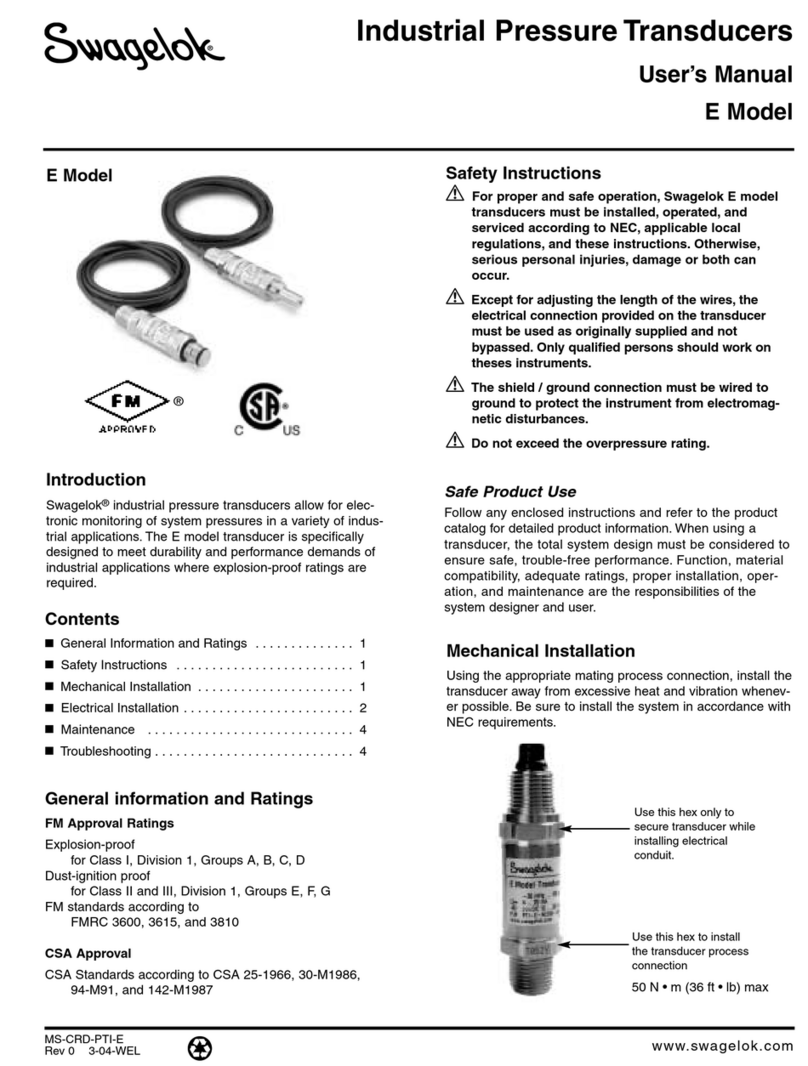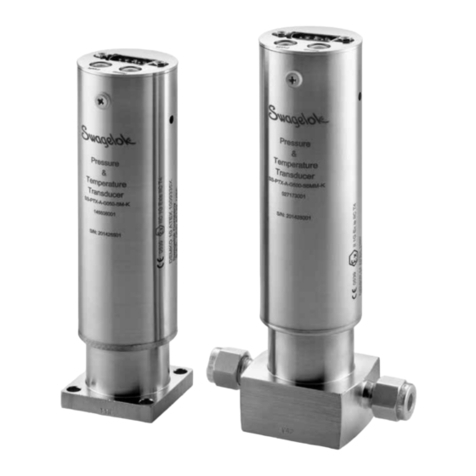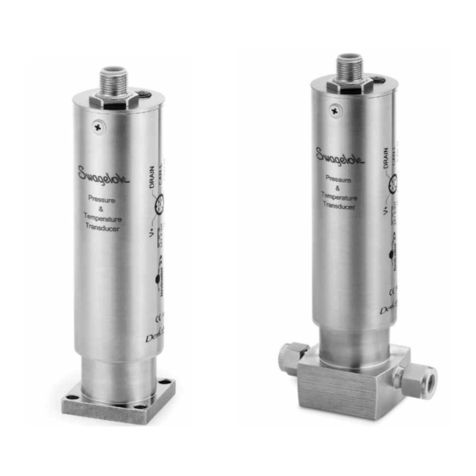
MS-CRD-PTI-S
Rev 5 12-10-WEL
Industrial Pressure Transducers
User’s Manual
S Model
www.swagelok.com
■ Safety Definitions...................... 1
■ Safety Instructions..................... 1
■ Mechanical Installation ................. 1
■Service and Maintenance ............... 2
■Electrical Installation .................. 2
■Wiring Diagrams ...................... 3
■ Troubleshooting Guide ................. 4
Contents
S Model
Introduction
Swagelok industrial pressure transducers allow for
electronic monitoring of system pressures in a
variety of industrial applications. The products
feature an accuracy of 0.5 % Limit point calibration
(0.25 % Best fit straight line), and temperature
compensation to ensure accuracy and long term
stability when exposed to temperature variations. The
transducers are zero and span adjustable, and are
available in a wide variety of pressure and electrical
connections, pressure ratings, pressure units, and
signal outputs to fulfill many application requirements.
The Swagelok®S model transducer is
ideal for general use in a wide variety
of industrial applications such as
machine control, process control,
laboratory and test equipment,
hydraulics, and pneumatics.
50 N·m (36 ft·lb) max.
Mechanical Installation
For proper and safe operation, Swagelok
S model transducers must be installed,
operated, and serviced according to NEC,
applicable local regulations, and these
instructions. Otherwise, serious personal
injuries, damage or both can occur.
Except for adjusting the length of the
wires, the electrical connection provided
on the transducer must be used as
originally supplied and not bypassed. Only
qualified persons should work on these
instruments.
Do not exceed the overpressure rating.
Before servicing any installed pressure
transducer you must
● depressurize system
●purge the transducer
Residual material may be left in the
transducer and system.
Safety Instructions
Safe Product Use
Follow any enclosed instructions and refer to the
product catalog for detailed product information. When
using a transducer, the total system design must be
considered to ensure safe, trouble-free performance.
Function, material compatibility, adequate ratings,
proper installation, operation, and maintenance
are the responsibilities of the system designer and
user. Improper selection or misuse of the product
may result in serious personal injury or property
damage.
Potential danger to life or of serious
injuries.
Potential danger to life or of serious injuries
due to catapulting parts.
Potential danger of burns due to hot
surfaces.
Notice, important information.
The product complies with the applicable
European directives.
The product was tested and certified by
CSA International. It complies with the
applicable Canadian standards on safety.
Certificate-No.: 1567213
Warning
Warning
Caution
Warning
Warning
Warning
Warning
Warning
Safety Definitions
























